Analysis
Damage and Looting of Emperor Yohannes IV Palace Museum
Emperor Yohannes IV Palace/Museum is one of the cultural properties targeted in the war on Tigray as part of a systematic campaign of destruction and cultural cleansing.
Published
4 years agoon
The palace of Emperor Yohannes IV found in Mekelle, Tigray is an important national landmark. The building was converted into a museum under UNESCO’s mission recommendation during the Derg era. Since then the museum has hosted several exhibitions and artifacts related to the emperor and his descendants. A rich ethnographic collection is also exhibited in one of the palace buildings. The palace is registered as a national heritage. After its recent renovation, it has the potential to be recognized as a World Heritage site for, along with other elements, Outstanding Universal Values and well-conserved remains of scenes of upheaval from 19th century Africa. This building and compound that have significant universal values have been compromised and become targets of attack in this conflict.
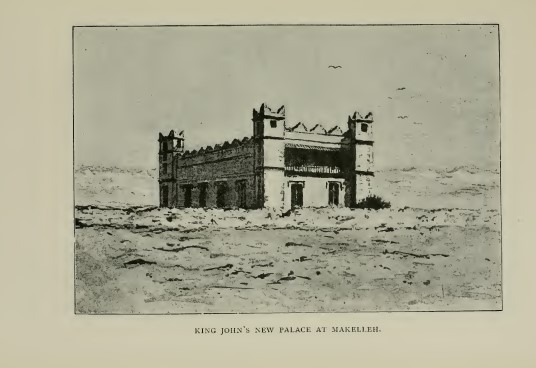
an Envoy’s Ride to the King of Zion’
Highlights of Emperor Yohannes IV Palace Museum
The architectural style of the palace is the Tigrayan style of grand Hidmo construction blended with European wood carpentry. Emperor Yohannes IV assembled a diverse team of builders, artisans, and carpenters for this construction. Master traditional builders Bijerewend Desta Tekhele and Bejirewend WerkeKiristos Engda were invited from Wegrezghi Debre Mihret Kidane Mihret Church and two Italian brothers called Yoseph Naretti and Goicom Naretti and four Moroccans worked along with the local builders. The special woodworks of the openings and throne of the Emperor that are subject to destruction now were made by the Italian Naretti brothers. Giacomo Naretti who worked in the Suez Canal construction was recruited by the mission of the emperor Yohannes IV who planned to bring professionals from Europe (London) for the construction of a railroad and telegram. His accounts of the journey and his service in the Emperor’s camp are detailed in the Naretti Diaries. However, the trip was cut short in Egypt by the Cholera pandemic that struck Europe. The palace was built on elevated land called Meam-Anbessa (meaning resting place of lions) encompassed by May Liham river at the heart of a group of villages with vast grasslands known as Mekelle.
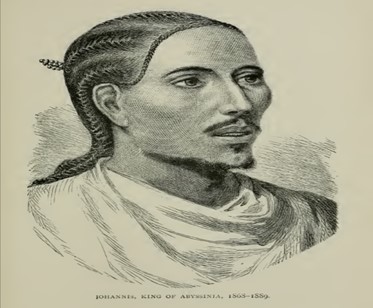
an Envoy’s Ride to the King of Zion’
Emperor Yohannes IV that built the palace is remembered as a devout liberator who fought several anti-colonial wars during the scramble of Africa in the 19th century. In fact, he died on the field protecting the western front of his empire in a place called Metema-Yohannes that now bears his name. There are several memorials to the Emperor, from Yohannes Church in Addis Ababa to hundreds of churches he financed including in Jerusalem, as well as the places where he engaged in battle. However, The grand Hidmo palace of the Emperor in Mekelle is unparalleled as a living memory and manifestation to understand the history of Africa and its relation to Europe in the 19th century.
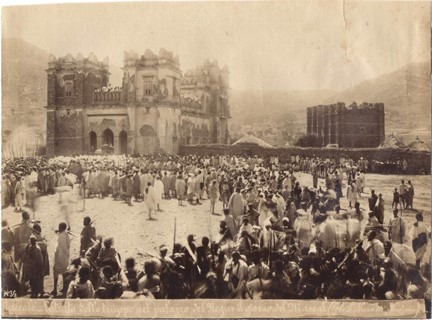
Locally the palace was the first major landmark in Mekelle city as the city developed into an imperial capital. Tadesse Siquar, who wrote on the establishment and development of Mekelle, highlights the importance of this landmark as a binding force encouraging cohesion in Mekelle city. The building of this grand palace inspired a generation of upwardly mobile builders and farmers to build houses in the grand Hidmo style. After the erection of the building, it was used as the main residence and public office of Emperor Yohannes IV and his descendants and relatives of including Leul Raesi Araya Sellasie Yohannes, Leul Raesi Mengesha Yohannes, Leul Raesi Gugsa Araya Sellasie, Leul Raesi Siyoum Mengesh, Raesi Abraha Araya, Raesi Haile Selassie Gugsa and Leul Raesi Mengesha Seyoum, along with other notables who married into the family.
There are three major buildings in the compound. The palace building and compound have received continuous renovation and improvements on the palace building and other auxiliary buildings in its compound. Many of the nobility that resided in the palace made some changes and renovations. For example, the palace was renovated by Raesi Seyoum Mengesha. Small renovations were also done during the Italian Occupation period as well as during Raesi Mengesha period. A recent complete restoration was conducted to the main palace building and the auxiliary residence building in 2018 by the Federal Palaces Administration Office and Authority for Research and Conservation of Heritage (ARCCH).
Most recently the building compound was under the management of the Federal office of the National Palaces Administration office. This is a federal government body that manages all federal and regional palaces. The two main historic buildings functioned as a museum hosting several cultural heritage articles.
Few other buildings have the power to tell the story of the formation of the modern Ethiopian state like this palace. During times of conflict, it was symbolically important and political leverage to conquer Mekelle and this palace specifically. This was shown during the two Italian invasions as well as during internal conflict in Ethiopia.
This tradition has continued in the current war being waged on Tigray but an entirely new and destructive dimension has been added. The destruction that has been wrought on this building, which was the administrative center of Tigray for over 130 years and unparalleled by public importance and symbolism, has paralleled the similar attacks on the more ancient religious sites like Axum, Debre Damo, and Nagashi that were targeted in this war as well.
Cultural Genocide: Destruction of the Palace Museum
After the breakout of the war on Tigray in November 2020, Mekelle was captured by Ethiopian forces on the 28th of November 2020. The occupation of Mekelle lasted until the end of June 2021 (28th June) when the Ethiopian army and allies fled Mekelle. Although there were informal reports as to the condition of the palace museum which was used as a military camp during this time, the complete picture of the damage and looting was not fully revealed until a video documentary of an investigation committee of experts visiting the site was broadcast by Tigray Television. This committee of experts was established by the Tigray State Bureau of Culture and Tourism to assess the damage to the museum following the liberation of Mekelle. Committee members included bureau experts, staff of the Emperor Yohannes IV museum, Mekelle Zone Administration, and Tigray Martyrs Memorial Museum ( another museum ransacked by the Ethiopian army).
Mr. Yirga Asefa, a museums expert from the bureau, was one of the committee members who made the assessment. He spoke to Tigray TV describing the activities of the committee which included an on-site visit to the museum. He noted that the compound had been used as a military fort against international laws. The compound was littered with waste from the soldiers. He observed heavy trucks were parked in close and dangerous proximity to the palace. The signage of the palace was completely vandalized. He also noted that there are several cracks in the palace building as a result of the activities during the time of occupation.
Mr. Haleform Haftu (a local resident) who visited the museum after federal soldiers fled told Tigray television that the palace was used as a camp for the soldiers and completely damaged by them. He said ‘we can’t even call it camp. Camp is organized but this was worse than a donkey’s barn. Every place was converted to a dorm of the soldiers.’ Mr. Bethel Tsegay, a young local resident on Tigray tv recalls how the place was a tourist attraction and well maintained. He said after the war the museum is completely ravaged.
Mr. Mebrahtom GebreMedhin (Museum and heritage protection expert of the Emperor Yohannes Palace Museum) said ‘we were not allowed to visit the site during the occupation time. But the same federal police officers were returned to look after the palace, those who were keeping it here. When we reached out to them to look into the museum, they told us everything was destroyed and there is nothing to visit. One day I was allowed to visit and it was rampaged as they said’.
Mr. Mebrahtom gives a detailed account of what happened to the palace museum when it was converted into a military camp by the Ethiopian army. The army used the palace building as a residence camp, arms storage, and barn for animals. One striking example is that the leader of the army in the camp moved into the palace with his family and his complete livestock. The upper floor of the drum tower was used as a residence while sheep, goats, and chickens were put on the ground floor. The walls were decorated for residence. Open fire kitchens were installed all over the compound. The old olive wood doors of the drum tower building were broken and damaged during moving in.
Screenshot from video© Courtesy of Tigray Television.
Table: Presenting Damages and Looting to Emperor Yohannes IV Museum
| Buildings/Objects | Status | Image |
| Museum Compound | – Traditional fountain at the garden of the palace (destroyed) – Heavy trucks of the Ethiopian army parked near the palace building. | |
| Buildings | The door and all windows to the crown room and other rooms were broken. These doors are original carvings from the 19th century. An old key chamber was broken. – Olive tree door to the throne room (Damaged) – Door of the ethnographic museum on the smaller building of the palace (Damaged) – Entrance to the Horse room of Emperor Yohannes later used as secretary room by Raesi Mengesha (Damaged) – Olive wood door to Emperor Yohannes living room (Damaged) | |
| The Crown Seat and Bed Chambers | – Crest rail of the crown chair (Damaged) – The crown chair, both arms (Damaged) – Both sides of the wooden throne stage were broken to investigate inside. (Damaged) – The bed of Emperor Yohannes, severely damaged with broken parts and in bad condition. The stiff joints of the bed are now loose. (Damaged) – Bedroom carpet of Emperor Yohannes (looted) | |
| Museum (Artifacts) | – Rifle and sword collection of Emperor Yohannes Palace – Pocket knife from Britain gift to the Emperor (looted) – Locally made sword (looted and Recovered) – Rifle with gold trigger (Looted and Recovered) – Three cases of sword clad in gold (looted) – ‘Walta’ a traditional war spear and shield made from wood and porcupine quills was vandalized (Damaged) – 3 Walta traditional spears (looted) | |
| Museum (Imperial clothes and other objects) | – Clothes: Kabba (cloak) cloth of Emperor (looted ); Lion skin Kabba (cloak) is (damaged and torn); Lion skin Kabba(cloak) of Raesi Gugsa (Damaged) – Traditional priestly garments and female clothing on exhibit were torn apart (Damaged) – A pair of shoes owned by Princess Shashewerk Yilma clad in golden color (Looted) – Silver adornment of Raesi Gugsa (Looted) – There were two saddles of the Emperor, one for a horse (Damaged) and the other for a mule (Looted) | |
| Pictures and Paintings | – Popular painting of the emperor, broken and torn (Damaged) – Framed old picture of Raesi Alula Engida (Damaged) – Old painting of Emperor Yohannes and crown prince Araya Sellasie (Damaged) | |
| Crosses, jewelry, and personal items | – A collection of crosses of the Emperor Yohannes Palace (4 looted) – Marble cross (Damaged) – 8 necklace crosses (Looted) – Cloth Iron of the Emperor that works with gas fuel (looted) – Drinking goblet (Looted) – (Tea)pot used for sacred oil storage (Looted) – Lamp collection (Damaged) | |
| Damages in the collection of the ethnographic museum | – Mekatecha of Irob culture (Damaged) – Ancient Gofla (Traditional cuisine table) (Damaged, partially looted) – Several ethnographic materials of Tigrayan, Erob, Afar and Kunama communities (looted) – Two afar knives are (looted) | |
| Drum Tower | Damaged and used as a residence, artifacts looted – The big drums (Negarits) were thrown outside to make room for residence (Damaged) – The seats of the drums were either looted or used as firewood (Looted) | |
| Auxiliary Amenities | – Almost all glass showcases are broken and unusable – Electrical installation of the museum was damaged and looted – Picture lighting bulbs destroyed in the bedroom of the Emperor – All office documents and archive of the museums is completely damaged – Several auxiliary objects of the museum were collected into shade storage with gasoline – The Adarash (meeting/conference area) of the museum office was converted into a dormitory of the soldiers – The compound of the palace was completely littered with waste from camping soldiers – Museum canteen (Damaged and looted) – DVD and Cassettes with the history of Emperor Yohannes were looted |
Conclusion
The palace museum of Emperor Yohannes IV is one of the many Tigrayan heritage and cultural properties targeted in this war. Cultural heritage was deliberately targeted for attacks, destruction, and looting in all parts of Tigray. The rehabilitation of the museum demands a lot of effort and resources. The professionals in Tigray Bureau of Culture and Tourism, Mekelle Zone, Martyrs’ Museum, and Tigray television did a commendable job in early documentation of the damage, particularly when there is a complete communication blackout on Tigray and other burning issues at hand. The rehabilitation of this important heritage demands collaboration from the international community. In general, the following things are demanded at this point.
- To flag the looted objects and reinstate them when they are found.
- To do stabilization of the damaged objects in relation to the concerned institutions. Above mentioned institutions and Mekelle University are important partners in this regard.
- Mobilization of resources to rehabilitate the palace museum into it prewar condition
Alula Tesfay Asfha is a post doctoral fellow at Goethe University of Frankfurt in the area of cultural heritage, architecture, and urbanism. He is also a lecturer at Mekelle University, Tigray.




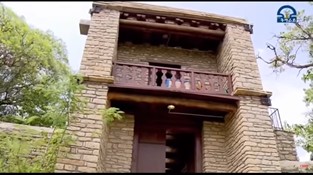
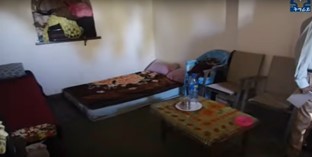

countless defeats to ENDF & its allies
August 16, 2021 at 2:39 pm
Amhara militia and ENDF are known for their massacre and war crimes in Tigray. The more defeats they had, the worse their morale became, and the more they slaughtered civilians in Tigray. All those atrocities committed against Civilian Tegarus emboldened TDF.
More defeats to Amhara militia , ENDF and Eritrean forces.
xxxlock up Amhara elitesxx
August 16, 2021 at 1:58 pm
ከየትኛውም ብሔር እና ጎሳ የሚሆኑ ንፁሃን ላይ የሚደርስ ማንኛውንም ኢሰብአዊ ድርጊት ሁሉም ሊቃወመው ይገባል፥፥ነገር ግን በጠላት መሬት ውሥጥ የተገኘ ና የተማረከ ማንኛውም ንብረት እንደ ማንኛውም የጠላት የጦር መሣሪያና ለጦርነቱ መገልገያ ይሆናሉ ተብለው የተንቀሳቀሱ ንብረቶች ሁሉም ገቢ ሊደረጉ ይገባል፥፥ይህ ትግራይ በጦርነቱ ምክንያት ሆን ተብሎ የወደሙ እና የተዘረፉ ቅርሶች ና ንብረቶች ፥የተዘረፈ ንብረት ሁሉ ጠላት ሊመልስና ካሣ ሊከፍል ይገባል፥፥ለዚሁም በዓለም ዓቀፍ ህግ መጠየቅ አለበት፥፥የትግራይን ሕዝብ ለማጥፋት ገንዘብ ና ቁሳቁስ ሲያበረክቱ የነበሩ የአምሓራ ባለሀብቶች እንደ ወርቁ ዓይተነው ዓይነት ዓልጠግባይ ፎጤ ንብረትሁሉ ገቢ መደረግ አለበት፥፥የጠላት እኛ የወንጀለኛ ንብረት በየትኛውም ዓለም ገቢ ይሆናል፥፥አቶ ወርቁ ዓይተነው ሰሊጡና በሁመራና በሌሎች ከተሞች የሚገኙ እርሻ ኛ ንግድ ለመቆጣጠር በማሰብ ሕዝብን ለማነሳሳት እዘምታለሁ ማለቱ ይታወቃል፥፥ ውድቀትና መፈረካከስ ለኢትዮጵያ ነፃነት ለሕብረ ብሔሮች ሁሉ
ትግራይ ና ኦሮሚያ ወላይታና ሲዳማን ጨምሮ ሪሳቸውን የቻሉና ሀገራት እና ለጋራ ጥቅም የሚሰሩ ይሆናሉ፥፥
Haile Redai
August 15, 2021 at 6:38 pm
Those who destroy the heritage of others are those devoid of their own history. If they had any heritage of their own they won’t damage those belonging to others. Their action is due mainly to lack of education, hate politics, lack of awareness or jealousy. But one thing is for sure, that their action is a part and parcel of the declared genocide of the regime in Addis Abeba and Amhara elites.
After all heritages are not only for the immediate resident local population but are for the world community, hence known as World Heritage. The Palace will be restored to its former glory by all means necessary. We must seek the assistance of the world community to help us restore all damaged historical landmarls of Tigray including Nejashi, Debra Damo, etc.
Victory to Tigray!!!!